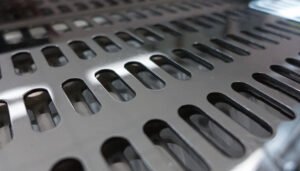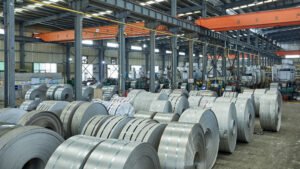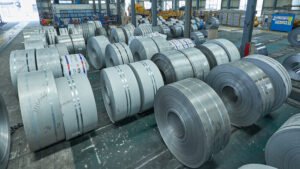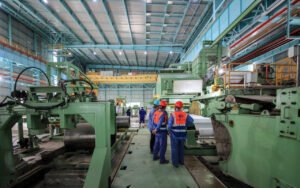Переход на листовую нержавеющую сталь 316L: Решение проблемы коррозии на фармацевтическом заводе
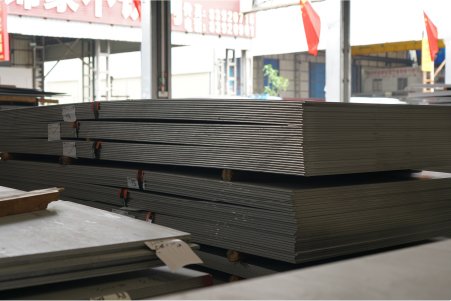
Are persistent corrosion issues compromising your production integrity and inflating maintenance costs? This challenge can lead to catastrophic equipment failure, product contamination, and regulatory nightmares. We recently guided a pharmaceutical partner through this exact struggle, culminating in a strategic upgrade to 316L stainless steel sheets1.
Upgrading to 316L stainless steel sheets provides a definitive solution to corrosion in pharmaceutical plants, particularly against chloride-induced pitting and crevice corrosion. This material, containing molybdenum, ensures compliance with GMP standards, enhances equipment longevity, and protects product purity by offering superior resistance to aggressive cleaning agents and process chemicals.
For any manufacturing facility, especially in the pharmaceutical sector, the integrity of your equipment is non-negotiable. It directly impacts product quality, operational safety, and your bottom line. I’ve seen firsthand how overlooking the subtle signs of material degradation can spiral into major operational crises. This case study isn't just about replacing metal; it’s about making a forward-thinking investment in resilience and quality assurance. Let's explore the journey our client took from facing daily corrosion challenges to implementing a robust, long-term solution.
The decision to upgrade critical infrastructure is never taken lightly. It involves a complex interplay of budget constraints, operational scheduling, and technical validation. From my experience at MFY, I’ve learned that the most successful projects are born from a deep, critical analysis of not just the problem, but the total cost of inaction. A superficial fix might solve today’s issue, but it often paves the way for a bigger failure tomorrow. For our pharmaceutical client, this meant shifting the perspective from the upfront cost of 316L sheets to the devastating long-term cost of product loss, downtime, and reputational damage. This required a holistic evaluation, bringing together engineering, quality assurance, and procurement to weigh the evidence and make a decision that would safeguard the plant's future. This process of collaborative, critical thinking is what turns a simple material purchase into a powerful strategic advantage.
What specific corrosion issues were faced by the pharmaceutical plant?
The plant was battling constant equipment contamination and unexpected downtime. The culprit was insidious corrosion on their processing tanks, which threatened to compromise entire batches of sensitive products. This problem created a cycle of reactive maintenance, escalating costs, and growing concern over regulatory compliance.
The pharmaceutical plant faced severe localized corrosion, specifically pitting and crevice corrosion, in its 304 stainless steel processing vessels. This was caused by exposure to saline-based solutions and aggressive, chloride-containing cleaning agents, leading to metallic contamination risks and a loss of structural integrity over time.
Understanding the precise nature of the corrosion was the first critical step in diagnosing the problem. During a site visit, my team and I worked with the plant’s engineers to analyze the failures. We observed small but deep pits on the internal surfaces of the mixing tanks, particularly around welds and seams—classic signs of chloride attack. These weren't just surface-level blemishes; they were potential breeding grounds for contaminants and precursors to leaks. The plant’s team explained that they had been forced to discard several high-value batches due to metallic leaching, a situation that was becoming financially unsustainable. The existing 304-grade stainless steel, while adequate for many applications, was proving incapable of withstanding the specific chemical environment of their advanced pharmaceutical processes. This ongoing battle wasn’t just an operational headache; it was a direct threat to their product quality and brand reputation. It became clear that a simple repair or "like-for-like" replacement would not suffice. A fundamental change in material specification was necessary to break the cycle of failure and secure the facility’s long-term production viability. We needed to introduce a material that could offer a permanent solution.
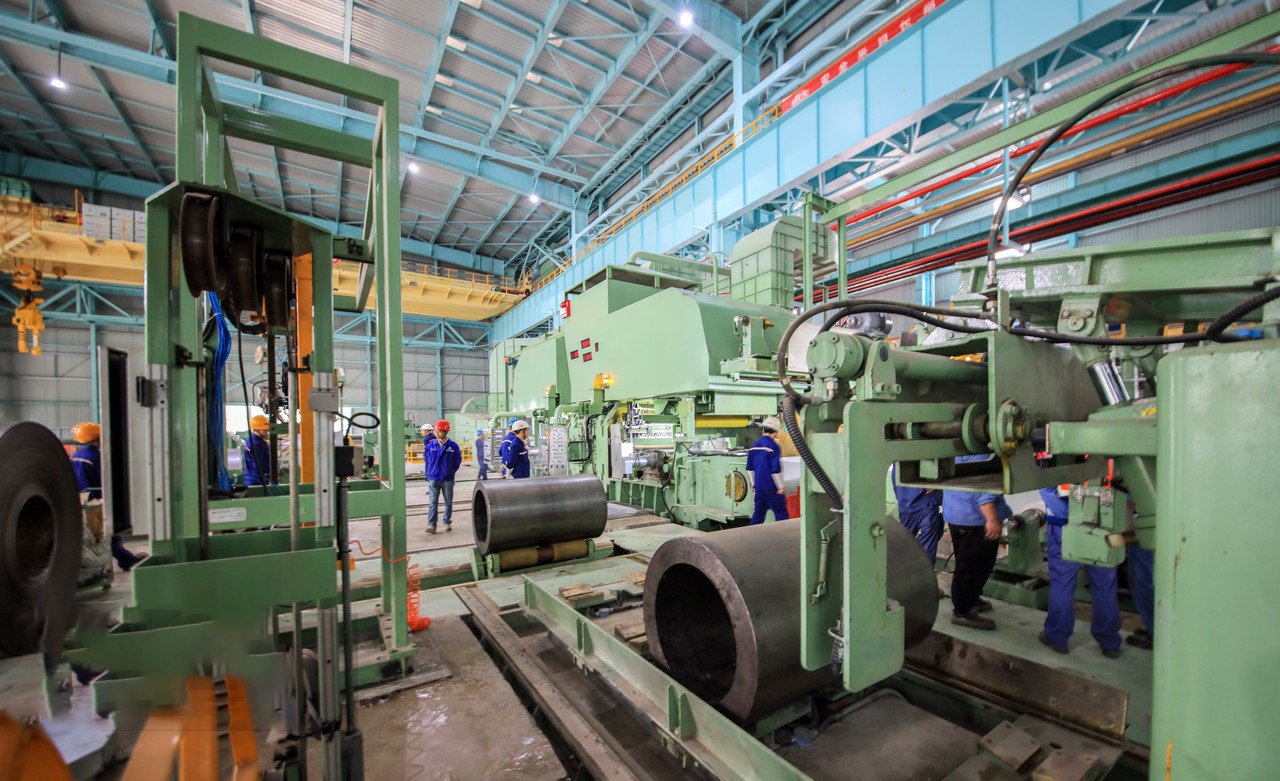
In our deep-dive analysis of the corrosion phenomena at the plant, which I'll call "PharmaPure" for confidentiality, it became evident that the issues were multifaceted and deeply rooted in the interaction between their materials, processes, and cleaning protocols. The problem extended beyond simple rust; it was a complex chemical assault on their primary production equipment. The insights gained were crucial not only for PharmaPure but serve as a vital lesson for any manufacturer handling sensitive or corrosive substances. The specific types of corrosion identified were not just technical curiosities; they represented direct threats to the sterility and purity required under Good Manufacturing Practices (GMP). Recognizing these specific failure modes was the cornerstone of developing an effective and lasting upgrade strategy, moving them from a state of constant reaction to one of proactive control.
The Insidious Attack of Pitting Corrosion
Pitting corrosion was the most visually alarming issue. We identified numerous microscopic pits on the interior surfaces of their large-scale mixers and storage tanks. At first glance, these might be dismissed as minor imperfections, but under magnification, they revealed a more sinister story. These pits are a localized form of corrosion that creates small holes in the metal. For PharmaPure, these pits were initiated by the high concentration of chlorides present in both their saline-based active pharmaceutical ingredients (APIs) and the aggressive sterilizing agents used in their Clean-in-Place (CIP) systems. According to a study by NACE International2, the direct cost of corrosion in the production and manufacturing sector is immense, and for an industry like pharmaceuticals where purity is paramount, the indirect costs from contamination can be exponentially higher.
The primary issue with pitting is not the volume of metal lost, but the depth of penetration, which can lead to sudden and unexpected container failure. More critically for PharmaPure, these pits created microscopic crevices where product residues and microorganisms could accumulate. Standard CIP procedures were often insufficient to fully clean these areas, creating a significant risk of cross-contamination between batches and potential biofilm formation. This directly jeopardized their compliance with FDA and other international regulatory standards, which mandate smooth, cleanable, and non-reactive product contact surfaces. The existing Grade 304 stainless steel, with its standard chromium-nickel composition, lacked the specific elemental defense needed to resist this focused chloride attack.
This realization was a turning point. The engineering team had previously focused on optimizing cleaning cycles and adjusting chemical concentrations, but these were merely symptomatic treatments. The root cause was a fundamental material incompatibility. We explained that no amount of operational adjustment could fully mitigate the risk as long as the base material remained vulnerable. This understanding shifted the conversation from "How do we clean better?" to "What material will make cleaning effective and reliable?" It was a crucial step towards acknowledging the need for a material upgrade to 316L, which is specifically designed to counter this type of threat.
The Hidden Danger of Crevice Corrosion
Compounding the problem of pitting was crevice corrosion, a subtler but equally damaging phenomenon. Our inspection revealed this type of corrosion was most prevalent in shielded areas like gasket seals, flange faces, and the heat-affected zones of weld seams. These are areas where small, stagnant volumes of solution can become trapped. Inside these crevices, the oxygen level is depleted, creating an anodic site, while the area outside the crevice remains cathodic. This electrochemical differential, when combined with the presence of chlorides, creates a highly aggressive microenvironment that accelerates corrosion dramatically.
For PharmaPure, the consequences were twofold. First, it compromised the structural integrity of critical joints and seals, increasing the risk of leaks. A leak in a pharmaceutical processing line is not just a loss of product; it's a major biohazard and contamination event that can trigger a complete plant shutdown and regulatory investigation. The cost of such an event, including cleanup, product recall, and reputational damage, would be astronomical compared to the cost of a material upgrade.
Second, the corrosion products (metal ions) generated within these crevices would periodically release into the product stream, leading to metallic contamination. This was the likely source of the batch rejections they had been experiencing. The quality control team had detected trace metals that were consistent with the composition of stainless steel, confirming that the equipment itself was the source of the problem. This presented a clear and present danger to patient safety and product efficacy. The team had been replacing gaskets more frequently and re-torquing bolts, but again, these were temporary fixes that failed to address the underlying vulnerability of the 304 stainless steel in these crevice-prone zones.
Material Degradation from Chemical Sterilization
The final piece of the puzzle was the impact of their rigorous sterilization protocols. To maintain aseptic conditions, pharmaceutical plants rely on powerful chemical agents, including chlorinated cleaners and sanitizers, often at elevated temperatures. While essential for hygiene, these protocols place extreme demands on the equipment's material. The combination of high temperatures and chloride concentration is a perfect storm for accelerating all forms of corrosion, especially in Grade 304 stainless steel.
PharmaPure’s own data showed a correlation between the frequency of their most intense CIP cycles and the subsequent detection of metallic ions in quality control samples. Their well-intentioned efforts to ensure sterility were inadvertently destroying the very equipment designed to protect it. This is a common paradox in many processing industries. The maintenance and quality assurance procedures, designed to uphold standards, can become the source of degradation if the materials of construction are not robust enough to withstand them over the long term.
This understanding was vital. It demonstrated that the problem wasn't a result of operator error or a faulty cleaning procedure, but a systemic issue of material specification. An upgrade to 316L, with its addition of molybdenum, was presented not as a simple replacement but as a necessary evolution of their facility to align with their demanding operational reality. The molybdenum provides a crucial defense against chloride-induced corrosion, maintaining the passive layer on the steel's surface even under the harsh conditions of chemical sterilization. This ensures that the plant can maintain the highest levels of hygiene without compromising the integrity of their equipment.
316L resists chloride corrosionПравда
316L stainless steel contains molybdenum which provides superior resistance to chloride-induced pitting and crevice corrosion compared to 304 stainless steel.
Pitting corrosion is harmlessЛожь
Pitting corrosion creates microscopic holes that can lead to sudden equipment failure and harbor contaminants, making it particularly dangerous in pharmaceutical applications.
How was the decision made to upgrade to 316L stainless steel sheets?
Facing unsustainable losses and mounting regulatory risk, the management team knew a change was essential. The initial hesitation over the higher upfront cost of a new material was significant. The key was shifting the conversation from a simple expenditure to a long-term strategic investment in reliability.
The decision to upgrade to 316L stainless steel sheets was driven by a comprehensive Total Cost of Ownership (TCO) analysis. This analysis demonstrated that the higher initial material cost was far outweighed by the significant long-term savings from eliminating product loss, reducing maintenance, and ensuring regulatory compliance.
Making the final call involved a rigorous evaluation process that went far beyond a simple price comparison. As their potential supplier, we at MFY played a consultative role, helping their team build a business case that resonated with every stakeholder, from the engineers on the plant floor to the executives in the boardroom. We facilitated a series of workshops to quantify the hidden costs of inaction. We tallied the value of the discarded batches over the past year, estimated the man-hours lost to unplanned maintenance and re-cleaning, and modeled the potential financial impact of a single product recall. When these figures were laid out, the narrative changed. The perceived "expense" of 316L was reframed as an insurance policy against much larger, recurring losses. We provided them with technical data, performance case studies from other clients in the pharmaceutical sector, and transparent pricing on our 316L stainless steel sheets. This data-driven, collaborative approach removed the ambiguity and emotion from the decision, replacing it with a clear, logical path forward. It empowered the engineering manager to confidently present the upgrade not as a cost, but as a crucial investment in the plant's future profitability and reputation.
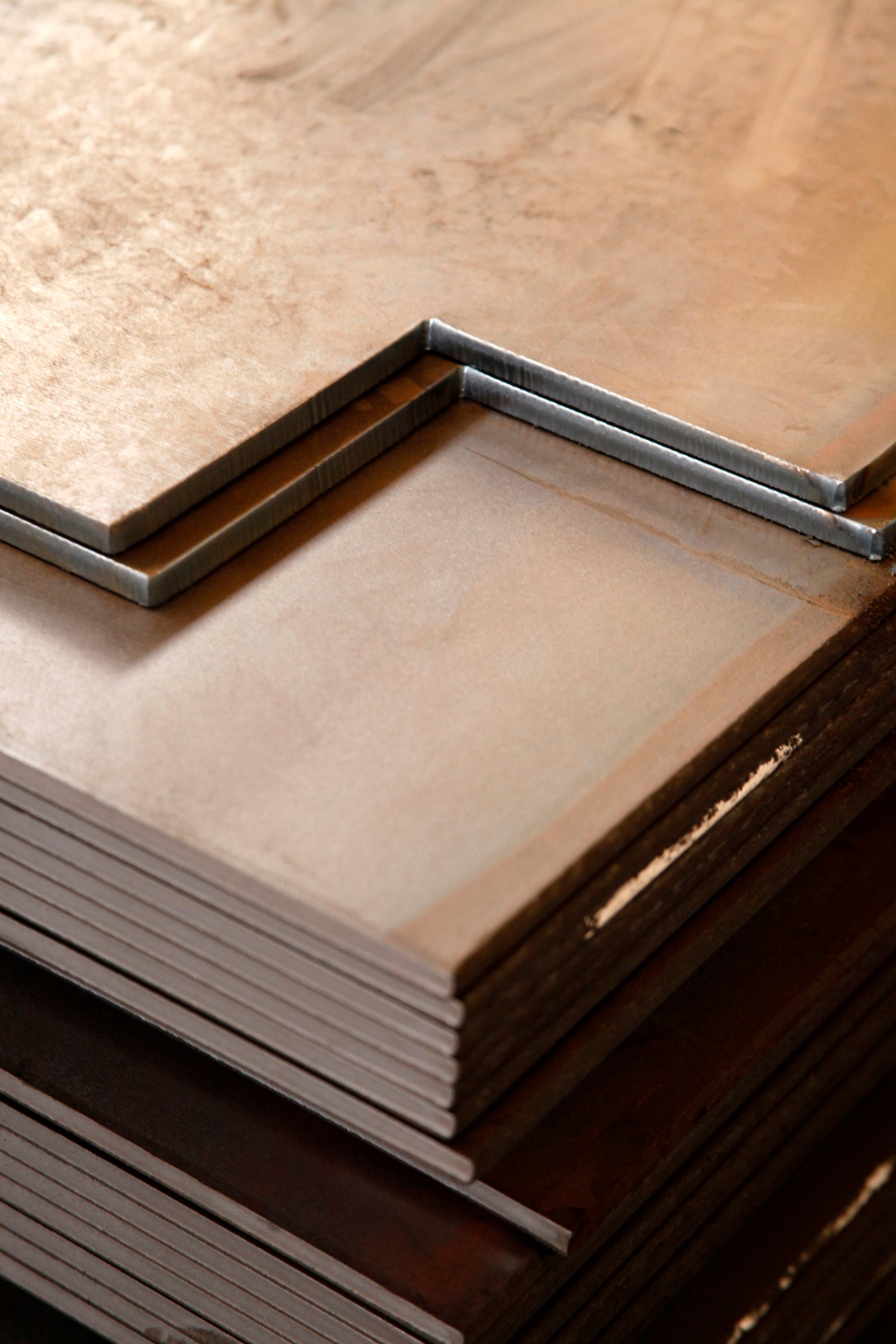
The journey from identifying the problem to authorizing the capital expenditure for a full-scale upgrade was a masterclass in strategic decision-making. It required PharmaPure's leadership to look beyond the immediate budget cycle and adopt a more holistic view of asset management and risk mitigation. Our role at MFY was to provide the clear, evidence-based rationale that would justify this forward-thinking investment. We focused on three core pillars of argumentation: a detailed Total Cost of Ownership (TCO) analysis that contrasted upfront costs with long-term value, a rigorous technical evaluation of material performance against their specific chemical challenges, and a strategic assessment of regulatory and brand implications. This structured approach transformed a complex engineering problem into a clear-cut business decision, aligning the technical needs of the plant with the financial and strategic goals of the corporation.
Initial Cost Analysis vs. Total Cost of Ownership (TCO)
The most immediate hurdle in any upgrade project is the initial capital outlay. Grade 316L stainless steel sheets are inherently more expensive than their 304 counterparts due to the inclusion of molybdenum and typically higher nickel content. PharmaPure's procurement team, tasked with managing costs, initially flagged the ~20-30% price premium as a significant barrier. To overcome this, we worked with their finance and operations teams to build a comprehensive TCO model. This wasn't about justifying an expense; it was about revealing a hidden truth: their existing 304 нержавеющая сталь3 was costing them far more than they realized.
Our model quantified several key "hidden" costs. First, we calculated the direct cost of lost product. Over the previous 18 months, PharmaPure had to quarantine and ultimately destroy product batches worth an estimated $450,000 due to metallic contamination. Second, we factored in the cost of operational downtime. Each time a tank had to be taken offline for inspection, intensive cleaning, or minor repairs, it resulted in approximately 12 hours of lost production, a cost they valued at $15,000 per event. With an average of six such events per year across their main vessels, this amounted to an additional $90,000 annually. Third, we included increased labor and material costs for maintenance, including more frequent gasket replacement and the labor-hours for passivation treatments, which added another $40,000 per year.
When these ongoing operational losses—totaling over $380,000 annually—were projected over the expected 20-year lifespan of new vessels, the higher initial investment in 316L became negligible. The TCO analysis clearly demonstrated that the payback period for the upgrade was less than two years. This data transformed the discussion from "Can we afford to upgrade?" to "Can we afford не to?" It provided the financial justification needed for the board to approve the project, viewing it as a high-return investment in operational efficiency and risk reduction.
Material Performance Evaluation and Risk Assessment
Alongside the financial case, a robust technical argument was essential. The engineering team needed absolute certainty that 316L was the correct solution. We provided extensive technical support, starting with a detailed comparison of the material properties. The key differentiator, as we emphasized, is the addition of 2-3% molybdenum in 316L stainless steel. This element is a game-changer for corrosion resistance, particularly against chlorides. Molybdenum significantly enhances the stability of the passive chromium oxide layer, making it more resilient and faster to self-heal when exposed to the aggressive chemicals used in PharmaPure's processes.
To make this tangible, we presented laboratory data and field studies showing the performance of 304 versus 316L in simulated pharmaceutical environments. We used a Pitting Resistance Equivalent Number (PREN) calculation to provide a quantitative measure of resistance. The PREN value for 316L is typically in the 23-28 range, whereas for 304 it is around 18-20. This higher PREN directly correlates to superior resistance to pitting and crevice corrosion in chloride-rich settings. We also created a simple comparative table to illustrate the critical differences for their team.
| Характеристика | Grade 304 Stainless Steel | Grade 316L Stainless Steel | Implication for PharmaPure |
|---|---|---|---|
| Molybdenum (Mo) Content | 0% (trace amounts) | 2.0 - 3.0% | Critical. Molybdenum is the key element for resisting chloride pitting and crevice corrosion. |
| Typical PREN Value | ~18-20 | ~23-28 | Higher PREN means significantly better performance in their specific chemical environment. |
| Best Use Case | General purpose, food & beverage (non-saline) | Pharmaceutical, chemical processing, marine | 316L is specifically suited for the challenges of pharmaceutical manufacturing. |
| Upfront Cost | Нижний | Higher (~20-30%) | The higher cost is offset by vastly superior longevity and lower TCO in this application. |
| Carbon (C) Content | < 0,08% | < 0.03% (The 'L') | Low carbon minimizes carbide precipitation during welding, preventing weld decay and ensuring joint integrity. |
This technical evidence, combined with a formal risk assessment, was compelling. The risk assessment categorized the likelihood of contamination and equipment failure as "High" with the continued use of 304 steel, but "Low" with an upgrade to 316L. This provided the engineering and quality assurance teams with the documented proof they needed to endorse the upgrade as the only viable path to mitigating unacceptable operational and safety risks.
Regulatory Compliance and Future-Proofing the Facility
The final pillar of the decision-making process was strategic: ensuring long-term regulatory compliance and future-proofing the facility. The pharmaceutical industry is governed by stringent cGMP (current Good Manufacturing Practice) regulations, which are constantly evolving. A core tenet of cGMP is that equipment must be constructed from materials that are non-reactive and non-additive, ensuring they do not alter the safety, identity, strength, quality, or purity of the drug product. While Grade 304 is acceptable in some contexts, the clear evidence of its degradation in PharmaPure's facility put them in a precarious regulatory position.
We highlighted that an upgrade to 316L was not merely a corrective action but a proactive step to align their facility with the highest global standards. Regulators like the FDA and EMA look favorably upon facilities that invest in robust materials known to prevent contamination. By choosing 316L, PharmaPure was sending a clear signal that they were committed to quality and patient safety above all else. This move would de-risk future inspections and strengthen their reputation with both regulators and customers.
Furthermore, we discussed the concept of "future-proofing." As PharmaPure planned to introduce new, potentially more complex and corrosive products in the coming years, the 316L material would provide them with greater operational flexibility. They would not have to re-evaluate their equipment's compatibility with each new product, saving significant time and resources in the future. The upgrade was therefore positioned as a strategic investment that enhanced their current compliance posture while simultaneously building a more resilient and adaptable manufacturing platform for future growth. This long-term, strategic perspective was what ultimately sealed the decision for the executive team.
316L has higher molybdenum contentПравда
316L contains 2-3% molybdenum which significantly improves corrosion resistance compared to 304 stainless steel.
304 steel has better PREN valueЛожь
316L has superior PREN values (23-28) compared to 304 steel (18-20), indicating better pitting resistance.
What are the key benefits observed after upgrading to 316L stainless steel?
Post-upgrade, the transformation at the plant was immediate and profound. The constant anxiety over equipment failure and product contamination vanished. It was replaced by a newfound confidence in their production integrity, allowing the team to focus on optimization and growth rather than daily firefighting.
After upgrading to 316L stainless steel, the key benefits observed were the complete elimination of corrosion-related product contamination, a significant reduction in maintenance downtime and costs, and guaranteed compliance with stringent cGMP standards, ultimately leading to improved operational efficiency and profitability.
The impact of switching to MFY's 316L stainless steel sheets extended far beyond the simple absence of rust. The most significant benefit, as the Plant Manager told me on a follow-up call, was the restoration of predictability to their operations. They could now run their CIP cycles at optimal temperatures and chemical concentrations without fear of damaging the equipment. This led to faster, more effective sterilization and quicker batch turnarounds. The quality control department reported a zero-incidence rate of metallic contamination in the six months following the upgrade, saving the company from the costly batch rejections that had plagued them before. Furthermore, the maintenance team was able to shift their focus from reactive repairs to preventative maintenance across the plant, improving overall equipment effectiveness (OEE)4. The benefits were not just operational and financial; they were cultural. The sense of relief and improved morale among the staff was palpable. They were no longer working in a state of constant crisis, but were empowered by reliable equipment to perform their jobs to the best of their ability. This holistic improvement is the true measure of a successful infrastructure upgrade.
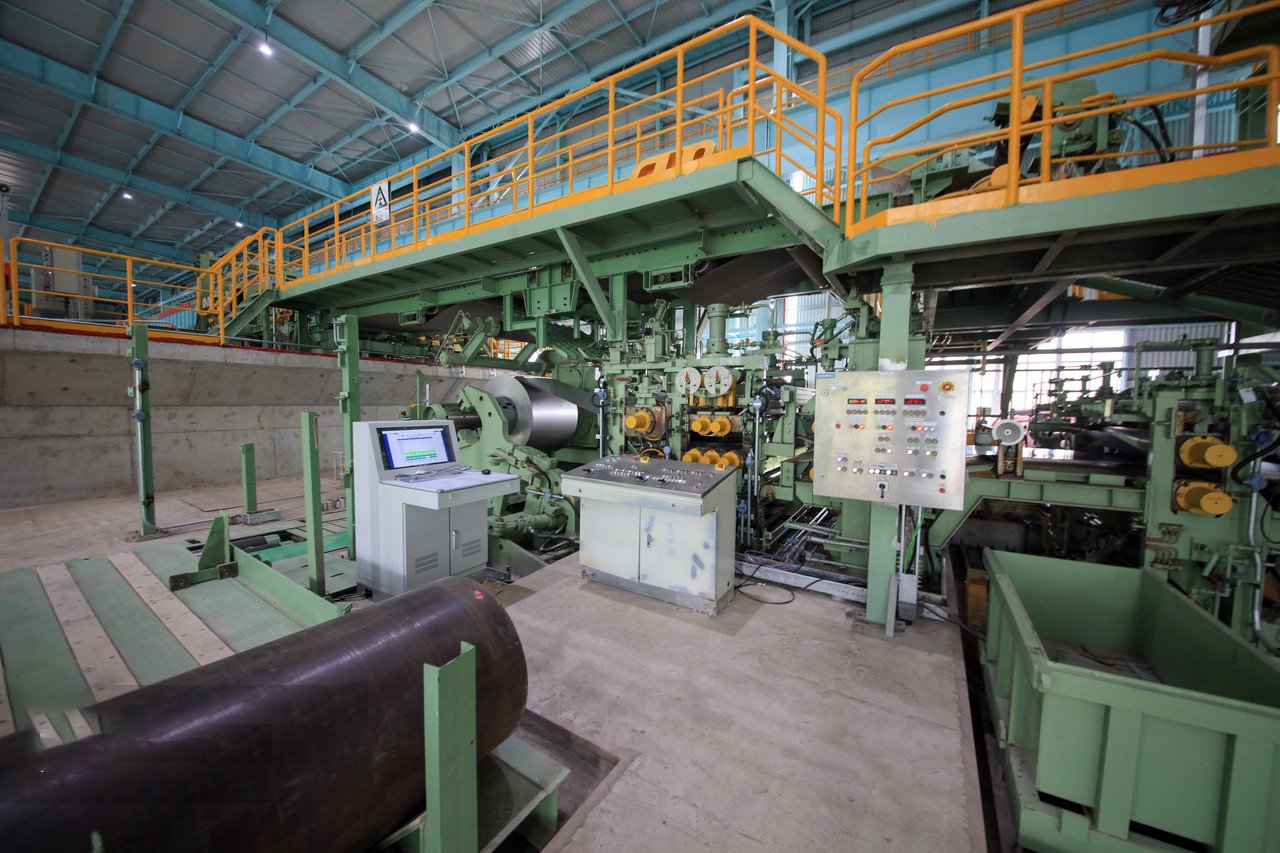
The successful implementation of 316L stainless steel sheets at the PharmaPure facility yielded a cascade of benefits that validated their investment decision. These advantages were not siloed; they created a synergistic effect that uplifted the entire operation, from the purity of the final product to the bottom line of the company. Analyzing these outcomes provides a clear picture of the tangible returns that can be expected from a strategic material upgrade. We can categorize these profound benefits into three main areas: enhanced product integrity and safety, dramatic improvements in operational efficiency and cost reduction, and long-term strategic gains in compliance and brand reputation. Each of these pillars contributes to a more resilient, profitable, and respected manufacturing enterprise.
Uncompromised Product Integrity and Safety
The most critical outcome of the upgrade was the absolute assurance of product purity. In the pharmaceutical world, patient safety is the ultimate metric of success. The previous issues with pitting and crevice corrosion in the 304 steel tanks posed a direct threat, with the potential for metallic ions to leach into sensitive drug formulations. This could alter the product's efficacy, stability, or even introduce toxicity. The upgrade to 316L completely eradicated this risk. Its superior corrosion resistance, endowed by molybdenum, ensures that the material remains inert and non-reactive, even when in contact with the aggressive chemical compounds and cleaning agents used in PharmaPure's processes.
Following the commissioning of the new 316L vessels supplied by MFY, PharmaPure's quality assurance laboratory conducted rigorous testing. Over a 12-month monitoring period, Inductively Coupled Plasma Mass Spectrometry (ICP-MS) tests on finished product batches showed that levels of nickel, chromium, and molybdenum were consistently below the minimum detectable limits. This was a stark contrast to the sporadic spikes they had previously recorded, which had led to the costly quarantining and destruction of entire batches. This data provided incontrovertible proof that the root cause of their contamination issue had been resolved.
This newfound material integrity had a profound impact on their risk profile. It effectively eliminated the catastrophic possibility of a product recall due to metallic contamination, an event that could have cost them millions of dollars and caused irreparable damage to their brand's credibility. By investing in 316L, PharmaPure wasn't just buying steel; they were buying peace of mind and safeguarding their commitment to patient safety, which is the foundational promise of any pharmaceutical company.
Drastic Reduction in Operational Costs and Downtime
The financial and operational benefits were immediate and substantial. The cycle of reactive maintenance that had drained resources was broken. Previously, the maintenance team spent, on average, 30 man-hours per month dealing with corrosion-related issues on the primary vessels, from inspections and polishing to full-scale passivation treatments. After the upgrade to 316L, this figure dropped to near zero for the new equipment. This freed up the skilled maintenance staff to focus on proactive and predictive maintenance across the entire facility, improving overall plant reliability.
The reduction in unplanned downtime was even more impactful. The six annual downtime events, which had cost the company an estimated $90,000 in lost production, were completely eliminated. The plant could now adhere to its production schedule with confidence, improving throughput and enabling them to meet customer demand more reliably. The improved efficiency of the Clean-in-Place (CIP) process also contributed. Because the 316L surfaces remained smooth and free of pits, the CIP cycles were more effective in a shorter amount of time, reducing the consumption of expensive cleaning chemicals, purified water, and energy.
When we aggregated these savings—the eliminated cost of lost batches ($450,000), the recovered production from downtime ($90,000), and the direct maintenance savings ($40,000)—the annual financial benefit to PharmaPure was well over half a million dollars. This demonstrated a remarkable return on investment, proving that the higher initial cost of 316L stainless steel was one of the most profitable capital expenditures they had made. The upgrade paid for itself far quicker than even our most optimistic TCO models had predicted.
Enhanced Regulatory Standing and Future Flexibility
ly, the upgrade delivered significant strategic advantages. From a regulatory perspective, PharmaPure was now in a much stronger position. During their next facility audit by a national regulatory body, the investigators noted the upgrade in their report, citing it as a positive example of proactive quality management. Having equipment made from 316L, the industry's preferred material for sterile applications, simplifies the process of demonstrating cGMP compliance. It removes a potential point of contention and shows a commitment to best practices that builds trust with regulators.
This enhanced compliance posture has long-term benefits. It can lead to smoother audits, faster new product approvals, and a stronger overall reputation within the industry. This reputation is a valuable intangible asset, attracting top talent and building confidence among partners and customers. The upgrade also provided them with crucial operational flexibility, effectively future-proofing their facility. The superior chemical resistance of 316L means they are now well-equipped to handle a wider range of future products, which may involve even more corrosive or sensitive compounds.
This strategic foresight allows their R&D department to innovate freely, without being constrained by the material limitations of their manufacturing equipment. They can develop next-generation therapies knowing that the plant has the robust infrastructure to produce them safely and efficiently. In essence, the upgrade was not just a fix for a past problem; it was an investment that opened up future possibilities, providing a resilient and adaptable platform for growth and innovation for years to come.
316L eliminates metallic contaminationПравда
The article states that 316L's molybdenum content prevents corrosion that could leach metallic ions into pharmaceutical products.
304 steel requires less maintenanceЛожь
Data shows 316L reduced maintenance from 30 man-hours/month to near zero, while 304 steel required frequent corrosion repairs.
How does 316L stainless steel compare to other materials used previously?
Before the upgrade, the plant relied on Нержавеющая сталь марки 3045, a common choice that ultimately proved inadequate. The persistent failures highlighted a critical mismatch between the material and the application. This experience forced a re-evaluation, underscoring that material selection is never "one size fits all."
Compared to the previously used 304 stainless steel, 316L offers vastly superior corrosion resistance due to its 2-3% molybdenum content. This key difference makes 316L exceptionally effective against the pitting and crevice corrosion caused by chlorides, a weakness inherent in Grade 304.
The difference in performance between the old 304 vessels and the new 316L tanks was like night and day. While both materials look nearly identical to the naked eye, their behavior in PharmaPure's specific chemical environment was worlds apart. The 304 steel, which is a fantastic and cost-effective material for less aggressive environments like food service or architectural applications, simply lacked the chemical fortitude to withstand the combination of saline solutions and chlorinated sanitizers. It was a constant struggle, a story of surfaces that required repeated passivation and welds that were a continual source of anxiety. In contrast, the 316L stainless steel has performed flawlessly. It has maintained its passive, non-reactive surface without any special intervention beyond the standard CIP protocols. This direct, real-world comparison within the same facility provided the most powerful testament to the importance of precise material specification. It moved the discussion from theoretical data sheets to tangible operational reality, proving that the "L" for low carbon and the addition of molybdenum in 316L are not minor details—they are essential features for reliability in demanding pharmaceutical applications.

A thorough comparison between 316L stainless steel and the previously used 304 grade is essential to understanding the rationale behind the upgrade. While both are austenitic stainless steels and part of the "300 series," their subtle compositional differences lead to vastly different performance characteristics in specific environments. For PharmaPure, this difference was the dividing line between operational failure and success. The comparison also extends to other potential material choices, reinforcing why 316L often emerges as the optimal solution for industries where purity and corrosion resistance are non-negotiable. Examining the chemical makeup, real-world performance under stress, and the long-term economic implications provides a comprehensive framework for material selection.
The Decisive Role of Molybdenum
The single most important distinction between Grade 316L and Grade 304 is the intentional addition of molybdenum (Mo) to the 316L alloy, typically in the range of 2% to 3%. Grade 304 contains only trace amounts of this element. This is not a minor alloying tweak; it fundamentally alters the material's electrochemical behavior. Molybdenum significantly increases the steel's resistance to localized corrosion, particularly pitting and crevice corrosion, which are most often initiated by chloride ions. In the context of PharmaPure's operations, where saline solutions and chlorinated cleaners were ubiquitous, the absence of Mo in their 304 tanks was their Achilles' heel.
The molybdenum works by stabilizing the passive layer—the thin, inert film of chromium oxide that protects the steel from corrosion. When a chloride ion attacks the passive layer on 304 steel, it can breach it and create a small pit that can rapidly deepen. On 316L steel, the molybdenum present in the alloy helps to quickly "repassivate" or heal this breach, effectively stopping the pit from forming or propagating. This self-healing capability is precisely what was needed to withstand PharmaPure's aggressive CIP cycles and product chemistry.
From a practical standpoint, this meant the 304 tanks were in a state of continuous, low-level degradation, requiring constant monitoring and intervention. The 316L tanks, in contrast, exist in a stable, passive state. This stability is the cornerstone of reliability in a cGMP environment. The decision to use 316L was a direct response to this fundamental chemical reality: when chlorides are a known factor in your process, molybdenum is not a luxury, it is a necessity.
The 'L' Grade: Significance in Welding and Fabrication
Another critical aspect of the comparison lies in the "L" designation, which stands for "low carbon." Both 304L and 316L variants exist. PharmaPure's old tanks were standard 304, while the upgrade was to 316L. This is a crucial detail, especially for fabricated equipment like tanks and vessels that require extensive welding. Standard stainless steels (with carbon content > 0.03%) can suffer from a phenomenon called sensitization when heated during welding. The carbon combines with chromium to form chromium carbides along the grain boundaries in the heat-affected zone next to the weld. This process depletes the chromium from the surrounding area, making it highly susceptible to corrosion.
This "weld decay" was evident in several of the failed 304 tanks at PharmaPure, with corrosion initiating right alongside the weld seams. By choosing 316L, which has a maximum carbon content of just 0.03%, this risk is virtually eliminated. The low carbon level prevents the formation of harmful chromium carbides during the welding process, ensuring that the corrosion resistance of the weld area is the same as the parent metal.
For any complex piece of pharmaceutical equipment—with its numerous nozzles, flanges, and internal baffles—welding integrity is paramount. Using an "L" grade material ensures that these fabricated joints do not become the weak points in the system. While the previous team might have overlooked this detail, our recommendation for 316L was emphatic. It ensures end-to-end corrosion resistance across the entire piece of equipment, not just on the flat surfaces of the sheets. This provides a truly monolithic defense against chemical attack.
Economic and Performance Trade-offs vs. Other Options
While the primary comparison was with 304 steel, it's also valuable to consider other alternatives to understand why 316L hit the sweet spot for PharmaPure. One option could have been to move to even higher-alloyed materials, such as duplex stainless steels or nickel alloys like Hastelloy. These materials offer even greater corrosion resistance and could certainly have solved the problem. However, their cost is significantly higher than 316L, often by a factor of 3 to 10. For the specific challenges faced by PharmaPure, this level of performance would have been an over-specification. The corrosion was severe for 304, but it was well within the resistance capabilities of 316L. A move to a more exotic alloy would have yielded diminishing returns, making the project financially unviable.
On the other end of the spectrum, one might consider coatings or liners inside the existing 304 tanks. This is often proposed as a lower-cost alternative to full replacement. However, in my experience, this approach is fraught with risk in a pharmaceutical setting. Liners can delaminate, blister, or develop microscopic pinholes, trapping product and creating an even worse contamination risk than the original corrosion. Verifying the integrity of a coating across a large, complex vessel is extremely difficult and introduces another potential point of failure.
Therefore, 316L stainless steel represented the optimal balance of performance and value. It provided the necessary technical solution to their specific corrosion problem without the exorbitant cost of higher-grade alloys. It also offered the reliability and cleanability of a solid metal solution, avoiding the risks associated with liners or coatings. It was the right material, at the right price, for the specific job at hand—a testament to the importance of precise engineering and material selection.
316L resists chloride corrosion better than 304Правда
316L's 2-3% molybdenum content enables superior resistance to pitting and crevice corrosion caused by chlorides, unlike 304 stainless steel.
304 is better for pharmaceutical applicationsЛожь
304 lacks molybdenum and has higher carbon content, making it prone to corrosion in pharmaceutical environments with chlorides and saline solutions.
What lessons were learned and recommendations provided for future upgrades?
This entire project was a powerful learning experience, not just for our client but for us at MFY as well. It reinforced the principle that short-term savings can lead to long-term pain. The key takeaway was the need for a holistic, forward-looking approach to material selection.
The key lesson learned is to prioritize a Total Cost of Ownership (TCO) analysis over initial purchase price. For future upgrades, it is strongly recommended to involve material experts early, specify "L" grade stainless steel (like 316L) for welded applications, and view material selection as a strategic investment.
The journey with PharmaPure crystallized several key principles that I now share with all our clients in demanding industries. The most crucial recommendation is to move the conversation about materials from the procurement office to the strategic planning table. Material selection should not be a footnote in a project plan, dictated solely by initial cost. It must be treated as a foundational decision that impacts everything from operational efficiency and product quality to brand reputation and long-term profitability. My advice is to always begin with the end in mind. Consider the most aggressive chemical exposure, the most rigorous cleaning protocols, and the highest regulatory standards the equipment will face over its entire lifespan. Specifying materials based on this "worst-case-scenario" analysis, rather than average daily use, is the best way to build a truly resilient and future-proof facility. In essence, don't just engineer for the process you have today; engineer for the challenges you'll inevitably face tomorrow. This proactive mindset is the difference between an asset that merely functions and one that provides a sustainable competitive advantage.
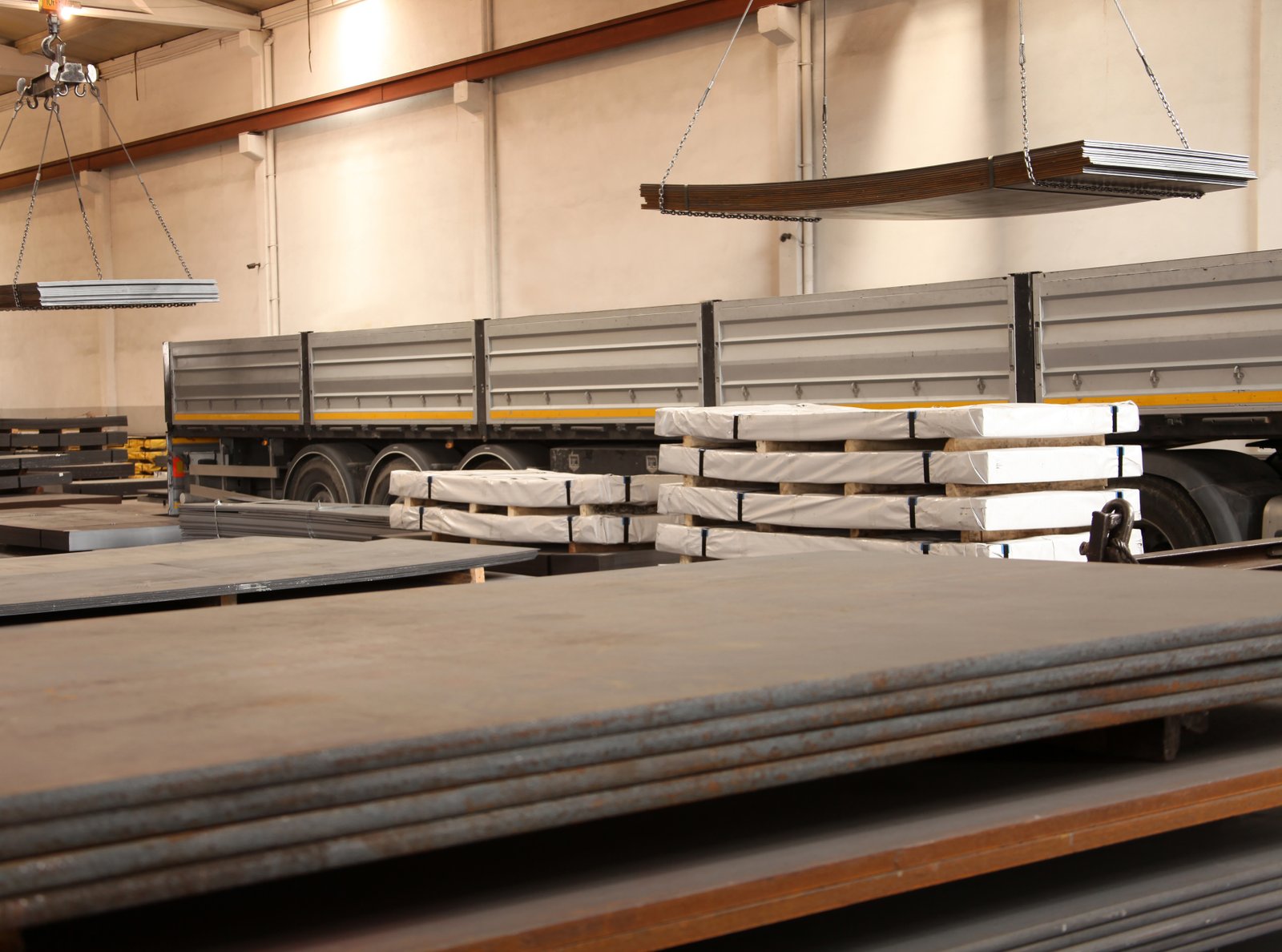
The successful resolution of PharmaPure's corrosion crisis offers a rich set of lessons that can serve as a guide for any manufacturing or processing facility contemplating an equipment upgrade or a new build. These takeaways transcend the specific context of stainless steel and speak to a broader philosophy of proactive and intelligent asset management. My recommendations for other companies are distilled from this direct experience and are designed to help them avoid the costly pitfalls of shortsighted material choices. The core principles revolve around adopting a life-cycle costing approach, fostering early collaboration between all stakeholders, and deeply understanding the material science that underpins operational reliability. Embracing these lessons can transform capital projects from simple expenditures into powerful strategic investments.
Lesson 1: Institutionalize Total Cost of Ownership (TCO) in Procurement
The most profound lesson from this case study is the immense value of a TCO framework. Many organizations, including PharmaPure initially, have procurement processes that are heavily weighted towards minimizing the initial purchase price (Capex). This often creates a conflict with operations and maintenance, who have to live with the long-term consequences (Opex). My primary recommendation is to formally embed TCO analysis into the procurement and capital expenditure approval process for all critical equipment.
This means creating a standardized model that all project managers must use. This model should, at a minimum, quantify: 1) Initial acquisition and installation cost. 2) Projected annual maintenance costs, including labor and materials. 3) The cost of reasonably foreseeable downtime based on material limitations. 4) The financial risk of product loss or quality degradation. 5) The potential costs associated with regulatory non-compliance. 6) The projected lifespan of the asset before major overhaul or replacement is needed.
By making this analysis a mandatory part of any proposal, it forces a more holistic and intelligent discussion. It shifts the focus from "What is the cheapest option?" to "What is the best long-term value?" At MFY, we often assist clients in building these models, providing data on material lifespan and expected maintenance to make the projections as accurate as possible. This data-driven approach removes emotion and departmental bias from the decision, aligning everyone towards the single goal of maximizing the long-term return on the company's investment.
Lesson 2: Engage Material Experts from Day One
A second critical lesson is the danger of making material decisions in a vacuum. PharmaPure's original 304 tanks were likely specified based on general industry practice without a deep analysis of their specific, and increasingly aggressive, chemical environment. By the time the corrosion became a crisis, they were in a reactive mode. My recommendation is to engage material suppliers and experts not as vendors at the end of the process, but as consultative partners at the very beginning of any new project or process modification.
When designing a new production line or even just changing a cleaning agent, bring in your material partners to review the proposed chemistry. A brief consultation can quickly identify potential incompatibilities that might not be obvious. For instance, a simple switch to a more effective, but more chlorinated, sanitizer could render an entire system of 304 steel tanks obsolete. A proactive review could have flagged this risk, allowing for a planned upgrade or a different sanitizer choice.
At MFY, we see our role as more than just delivering steel coils and sheets. We are part of our clients' extended engineering team. We encourage them to share process details (under NDA, of course) so we can provide informed recommendations. This collaborative approach costs nothing upfront but can save millions in the long run. It ensures that the material specification is not an afterthought, but an integral part of a robust and reliable process design from day one.
Lesson 3: Prioritize Design for Compliance and Longevity
ly, the project taught the invaluable lesson of designing for the future. The upgrade to 316L нержавеющая сталь6 not only solved the immediate corrosion problem but also gave PharmaPure a platform that was ready for future products and evolving regulatory standards. Therefore, my final recommendation is to always design and specify materials with an eye towards future-proofing the investment. This involves two key considerations.
First, always specify for the "worst-case" scenario. If there's a possibility of using higher chloride concentrations or temperatures in the future, specify the material to withstand those conditions now. The marginal cost of upgrading from 304 to 316L during a new build is far less than the cost of retrofitting or replacing it later. This approach, which I call "building in resilience," is a hallmark of world-class manufacturing operations.
Second, pay close attention to the details of fabrication, such as specifying low-carbon ("L" grade) variants for welded equipment. This ensures longevity and prevents premature failure at the seams, which are often the first points of attack. A robust specification document should not just say "316 stainless steel"; it should say "316L stainless steel," and may even specify surface finish requirements (e.g., Ra value) to ensure cleanability. By prioritizing these design details, companies can ensure their capital investments remain valuable, compliant, and productive assets for their full intended lifespan and beyond.
TCO analysis beats initial costПравда
The case study shows prioritizing Total Cost of Ownership leads to better long-term outcomes than focusing solely on purchase price.
304 steel works for all applicationsЛожь
The corrosion crisis proved 304 stainless steel fails in aggressive chemical environments where 316L is required.
Заключение
Ultimately, upgrading to 316L stainless steel is more than a corrosion fix; it’s a strategic investment in quality, safety, and long-term profitability. For pharmaceutical manufacturing, choosing the right material is the foundation of a resilient and compliant operation, safeguarding both product and brand integrity.
-
Learn why 316L is preferred for its corrosion resistance and cleanliness in pharma applications ↩
-
Explore the economic impact of corrosion based on NACE study ↩
-
Understand hidden costs associated with 304 steel that affect operational efficiency ↩
-
Understand the impact of material upgrades on equipment efficiency and reliability. ↩
-
Learn why 304 stainless steel was inadequate for PharmaPure's needs ↩
-
Discover advantages of 316L in resisting corrosion and future-proofing assets ↩
У вас есть вопросы или нужна дополнительная информация?
Свяжитесь с нами, чтобы получить индивидуальную помощь и квалифицированный совет.

